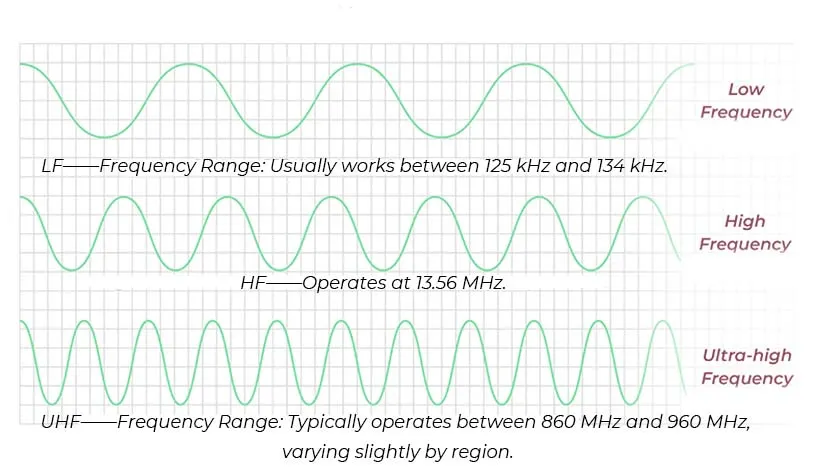This post provides a comprehensive overview of RFID (Radio Frequency Identification) frequencies, detailing their distinct characteristics and practical applications. It highlights the advantages of different frequency ranges, such as low, high, and ultra-high frequencies, and how these affect read ranges, data transfer rates, and environmental adaptability. The article also underscores the technological advancements that enhance RFID efficiency and reliability, making it a vital tool in various sectors, including logistics, retail, and healthcare. Overall, it emphasizes RFID’s transformative potential in streamlining operations and improving inventory management.
Author Archives: Ben Smith
RFID access control technology provides a secure and efficient method for managing access to facilities. Utilizing radio-frequency identification, it allows businesses to effortlessly track and control who enters specific areas, enhancing safety and reducing unauthorized access. Key features include real-time monitoring, easy integration with existing security systems, and the ability to manage multiple users and locations from a centralized platform. The benefits extend to improved operational efficiency, streamlined access management, and robust data collection for security analytics. This modern solution is essential for businesses aiming to safeguard their assets, streamline operations, and ensure a secure environment in an increasingly security-conscious world.
This post delves into the significance of Auto-ID technology, specifically focusing on RFID (Radio Frequency Identification) as a cornerstone of modern automation. It highlights RFID’s pivotal features, such as its ability to enhance inventory management and streamline supply chain processes. The advantages of RFID include increased accuracy, real-time data tracking, and improved operational efficiency. Additionally, the article emphasizes RFID’s distinctive qualities, like contactless scanning and the capacity to read multiple tags simultaneously, making it an essential tool in various industries. Overall, the post illustrates how RFID technology is transforming automation, driving innovation, and enhancing productivity in today’s fast-paced environment.
This post delves into the transformative potential of 13.56MHz RFID tags in laboratory settings, highlighting their efficiency in tracking samples and equipment. It provides a practical guide on implementation, emphasizing benefits such as improved inventory management, enhanced data accuracy, and streamlined workflows. The article distinguishes itself by offering real-world applications, tips for integration, and insights into the technology’s reliability and security features, making it an essential resource for lab professionals aiming to optimize operations.
NFC garment badges are revolutionizing apparel retail by enhancing customer engagement and streamlining inventory management. These innovative badges enable seamless interactions through smartphone technology, allowing consumers to access product information, promotions, and personalized experiences with a simple tap. The key advantages include improved operational efficiency, increased sales through targeted marketing, and enriched customer loyalty. By integrating NFC technology, retailers can differentiate themselves, adapt to modern shopping behaviors, and create a more interactive and informative shopping environment, ultimately driving growth and innovation in the industry.
Heat-resistant RFID tags are specialized identification devices designed to withstand extreme temperatures, making them essential in industries such as manufacturing, automotive, aerospace, and food processing. These tags enhance operational efficiency by enabling seamless tracking of assets in high-heat environments, ensuring durability and reliability. Key features include high-temperature tolerance, robust construction, and compatibility with various scanning technologies. The advantages of using heat-resistant RFID tags include improved inventory management, reduced downtime, and enhanced data accuracy, ultimately leading to streamlined operations and cost savings. Their unique qualities position them as invaluable tools for businesses operating in demanding conditions, emphasizing the importance of technology in modern industrial processes.
NFC Rings are innovative wearable devices that utilize Near Field Communication technology, allowing users to streamline everyday tasks with just a tap. This post explores their key features, such as contactless payments, digital business card sharing, and smart home control. By integrating seamlessly into daily routines, NFC Rings offer enhanced convenience and security while also promoting a minimalist lifestyle by reducing the need for multiple cards and devices. Discover how these sleek accessories can transform your interactions and improve efficiency in your life.
The post “RFID Antenna Power IoT Connectivity: Unleashing the Driving Force” explores the transformative impact of RFID technology on IoT connectivity. It highlights key features such as enhanced data transmission, real-time tracking, and streamlined operations. The advantages of implementing RFID antennas include improved efficiency, cost reduction, and increased accuracy in asset management. Unique aspects of the technology include its scalability and compatibility with various IoT applications, making RFID a vital component in modern connectivity solutions. Overall, the post emphasizes RFID’s role as a driving force in advancing IoT capabilities.
The blog post “How NFC Garment Badges and NFTs Are Revolutionizing Fashion” explores the transformative impact of integrating Near Field Communication (NFC) technology and Non-Fungible Tokens (NFTs) in the fashion industry. It highlights how NFC garment badges enable seamless interaction between physical clothing and digital content, enhancing consumer engagement through instant access to product information, authenticity verification, and personalized experiences. Additionally, NFTs offer a unique way to own and trade digital fashion items, establishing provenance and scarcity in a digital marketplace. Together, these technologies are redefining fashion by creating innovative shopping experiences, promoting sustainability through transparent supply chains, and fostering a closer relationship between brands and consumers, ultimately setting a new standard for authenticity and personalization in the industry.
This post provides an in-depth guide to RFID cable tie tags, exploring their definitions, applications, and benefits. RFID cable tie tags are innovative identification tools that combine the practicality of cable ties with radio frequency identification technology. The article highlights their pivotal features, such as durability and ease of use, making them ideal for inventory management and asset tracking in various industries. Key advantages include improved organization, enhanced efficiency, and reduced labor costs. The guide also discusses unique qualities that set RFID cable tie tags apart, emphasizing their role in streamlining operations and boosting productivity in environments where reliable tagging solutions are essential.










